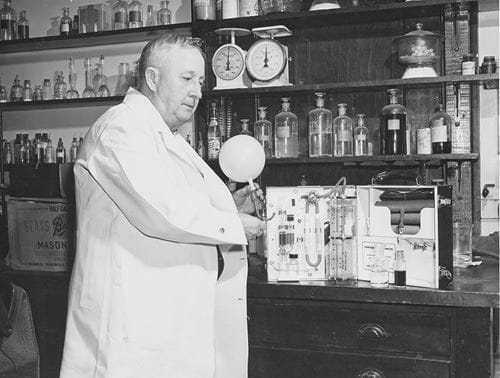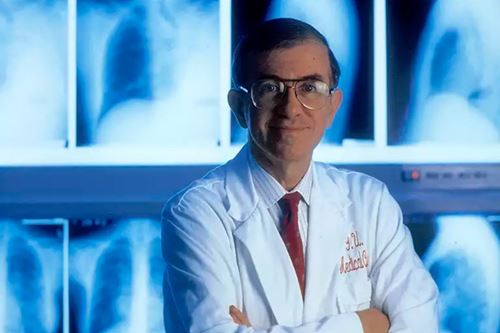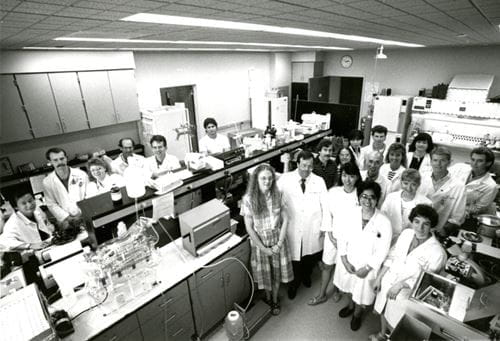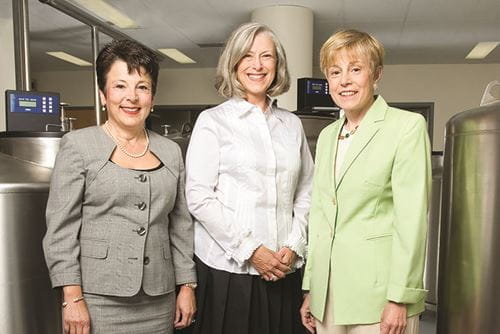Our Impact
Drunkometer/Breathalyzer
1930s–50sRolla N. Harger, MD, invented the drunkometer in 1931 to help curb drinking and driving. Suspects would blow into a balloon where their breath would mix with a chemical solution. The color of the solution would indicate the subject’s blood alcohol content.

Echocardiography
1960sHarvey Feigenbaum, MD, the "Father of Echocardiography," pioneered the most widely used cardiac imaging technique in the world through the use of sound waves.

Discovery of neurotransmitter glycine
1960sMori Aprison discovered the inhibitory neurotransmitter, glycine, in the 1960s. Glycine is key in the processing of motor and sensory information that permits movement, vision and audition.
First DNA bank
1970s–80sIU established the first DNA bank in the world, which took DNA from clients' blood samples to seek out markers for illnesses or conditions.
Cure for testicular cancer
1974Lawrence H. Einhorn, MD, developed the cure for testicular cancer through a chemotherapy treatment that included the platinum-based drug cisplatin along with two additional drugs in 1974, saving countless lives.

Development of Prozac (Paul Stark, Eli Lilly)
1980sPaul Stark served as a faculty member in clinical pharmacology at IU School of Medicine and was also the leader of the clinical team at Eli Lilly that developed Prozac. The Paul and Carole Stark Neurosciences Research Institute bears his name.
Umbilical cord transplantation
1988Hal E. Broxmeyer, PhD, and his lab pioneered the use of cord blood to treat cancer and immune disorders. The group processed the blood used in the first cord blood transplant in Paris. Cord-blood transplants have gone on to save tens of thousands of lives in the decades since.

First normal breast tissue bank
2007The Komen Tissue Bank is the only repository in the world for normal breast tissue and matched serum, plasma, and DNA. Samples from the bank have helped progress breast cancer research in countless studies.

New drug to treat X-linked hypophosphatemic rickets (Burosumab)
2018Research from Michael Econs, MD, and Kenneth White, PhD, formed the basis of new treatments for both X-linked hypophosphatemia and autosomal dominant hypophosphatemic rickets.
